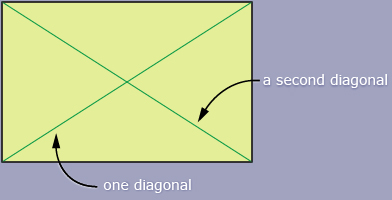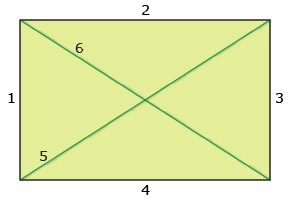Lesson 4
1. Lesson 4
1.12. Explore 8
Module 3: Permutations, Combinations, and the Fundamental Counting Principle

Diagonals are line segments that join two non-adjacent vertices in a polygon. For example, a quadrilateral (four-sided shape) will have two diagonals.
Can you use your math skills from this unit to find the number of line segments in any polygon? Perhaps you can find the number of line segments if you include both sides and diagonals?
If you have a quadrilateral showing diagonals and want to know the total number of line segments, you could draw a picture showing the line segments and count them. Since you have 4 sides and 2 diagonals, you have a total of 6 line segments.

Can you use permutations or combinations to find this same answer of 6? Since you have 4 vertices and you connect 2 of them at a time, would either expression 4P2 or 4C2 be the correct answer?
![]()
You see that the combination formula results in the correct answer. This makes sense since the order you choose the vertices will not change the look of the line segment. Therefore, order is not important.
Self-Check 5
Determine the number of line segments in a pentagon, a five-sided shape. Try using the combination formula, and then draw it out to check your work. Answer